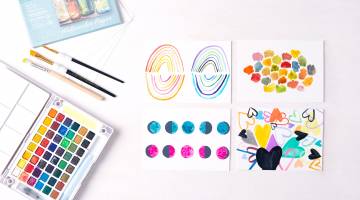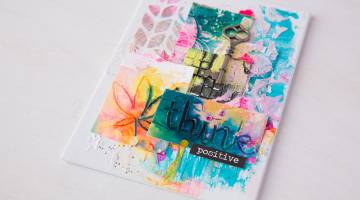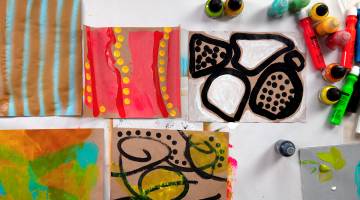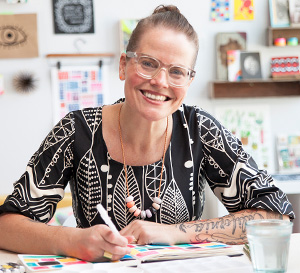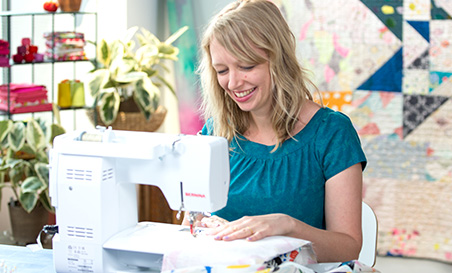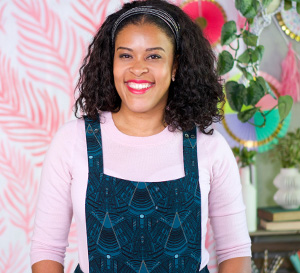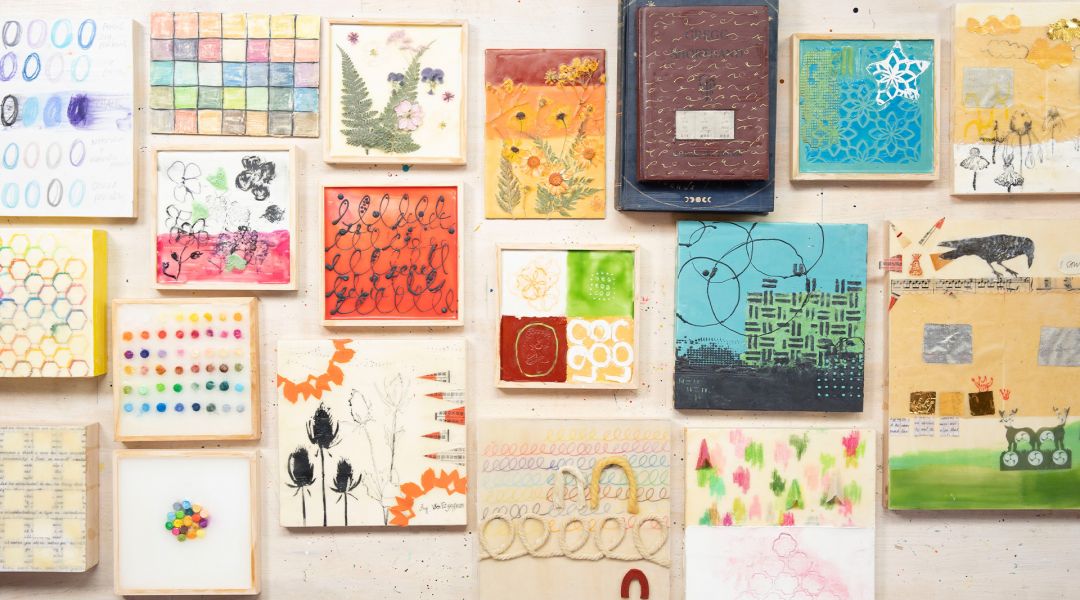
|
01:54
|
|
04:17
|
|
11:42
|
|
10:09
|
|
15:17
|
|
07:30
|
|
10:25
|
|
21:27
|
|
16:24
|
|
16:03
|
|
10:38
|
|
16:09
|
|
10:12
|
|
08:21
|
|
11:40
|
|
08:53
|
|
13:10
|
|
14:48
|
|
08:01
|
- Gloves or Barrier Cream
- Fire Extinguisher
- Container of water, in case paper or something catches on fire or for burns
- Safety glasses if you are doing a lot of pouring or splashing of materials
- Respirator and/or work in ventilated room
- Hair tie to keep hair off of your face, well-fitted sleeves
- Tip: keep palette 200 F/93 C or lower
- Encaustic Starter Kit
- Encaustic medium: Lisa recommends R&F brand, or make your own with 9 parts wax to 2 parts damar resin
- Plain beeswax or paraffin wax: in a brick or preferably pellets
- Hot surface, such as a griddle, skillet, etc.
- Flat Thermometer for checking surface temp
- Large drip pan or cookie sheet to protect work surface
- Metal containers to hold encaustic, such as small aluminum baking pans
- Fuse tools: torch, heat gun, or iron (for encaustic use only)
- Encaustic paints: purchase premade colors or add dried oil paint, oil sticks, pigment powder to create colors
- Popsicle sticks for stirring wax
- Bench scraper
- Wax paper
- Hand tools such as wood carving/linocut tools, awls, brayer, burnisher, bone folder, pottery tools, metal palette knives with shapes, rolling wheels, tweezers, and a Tjanting (Indonesian batik tool)
- Natural bristle brushes: Hake brushes or hardware brushes (for encaustic use only)
- Substrate: stiff, non bendable surfaces are better, such as encaustic board, wood panels, plywood, cradled panels (with or without lip), thick non-coated paper, very thick canvas, etc.
- Paper towels - rags can get wax filled and not useful quickly
- Slick Wax for cleaning
- Watercolor pencils, chalk pastels, india ink, pencils, Sharpies, etc.
- Linseed oil as a release for stamps and burnishing surfaces
- Gesso
- Matte medium or PVA glue
- Scissors, utility knife and cutting mat
- Hand carved stamps - check out Lisa’s Carve a Rubber Stamp Kit class
- Silicone molds
- Other items to add to your composition: stamps, pigment ink pads, stencils, carbon papers, gold leaf, tissue paper, ephemera, laser prints for image transfers, parchment/wax paper, painters/washi tape, textiles, ribbon, silcone molds for pouring 3D wax items, dried plants, old hardcover books, rope or other fibers, etc.
- Set up a home encaustic studio
- Use pigments to color your encaustic medium
- Play with different techniques to explore the medium
- Combine other art materials such as paints and 3D objects with encaustic wax







Such a comprehensive class! I will be referring to this material over and over as it inspires infinite ways to add wax as a medium. All the ideas are so light and bright and modern I just loved it. Thank you.
I loved this class, and had no idea there were so many possibilities for encaustic. I found the lesson on coloring plain encaustic medium especially helpful, because the pre-colored blocks of encaustic are so pricey, and now I know how to color with my oil pastels or paints, mica powders, and even earth powders!
This is a really interesting process. So many possibilities. Thanks for sharing all this info on it.
















